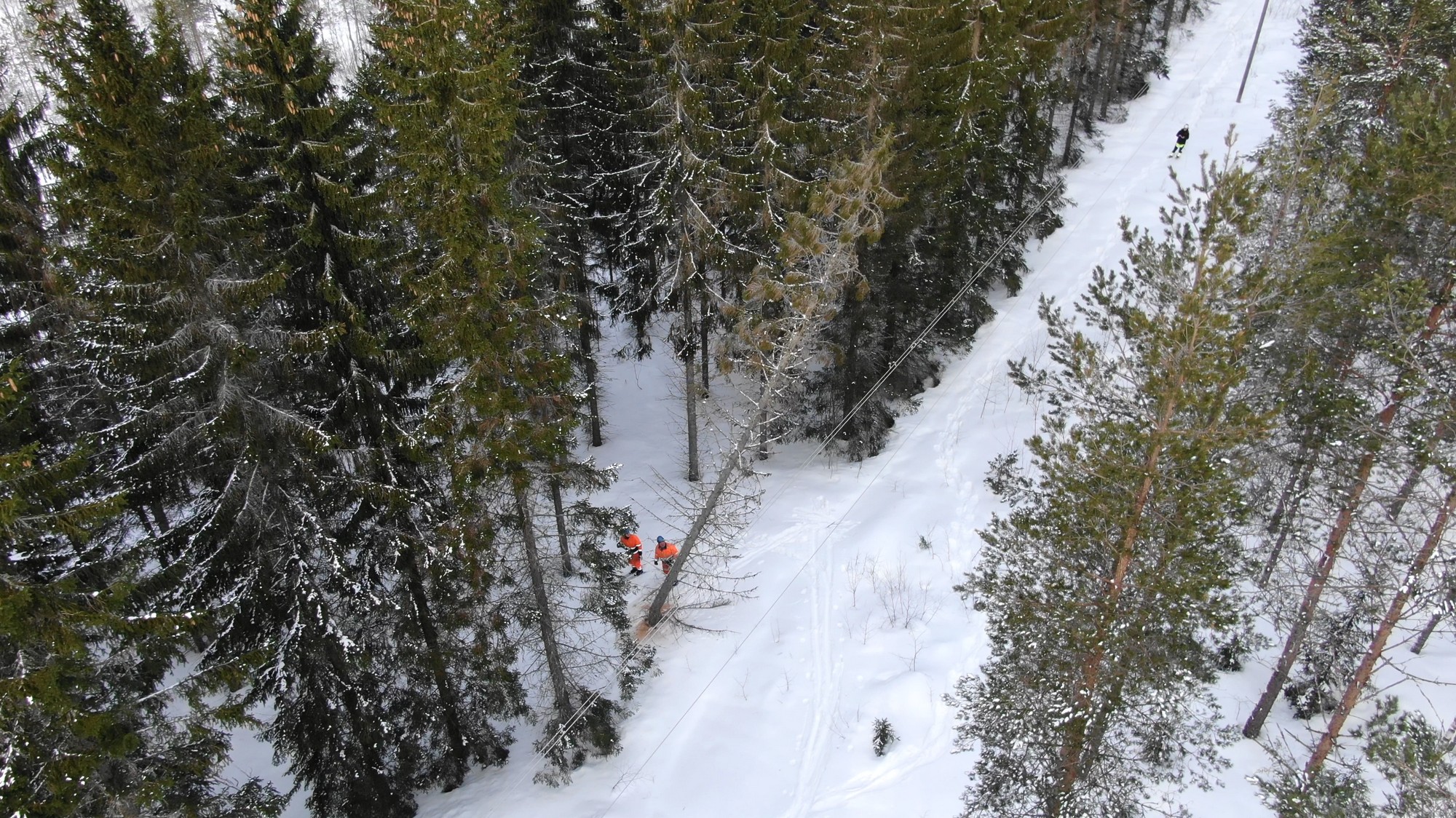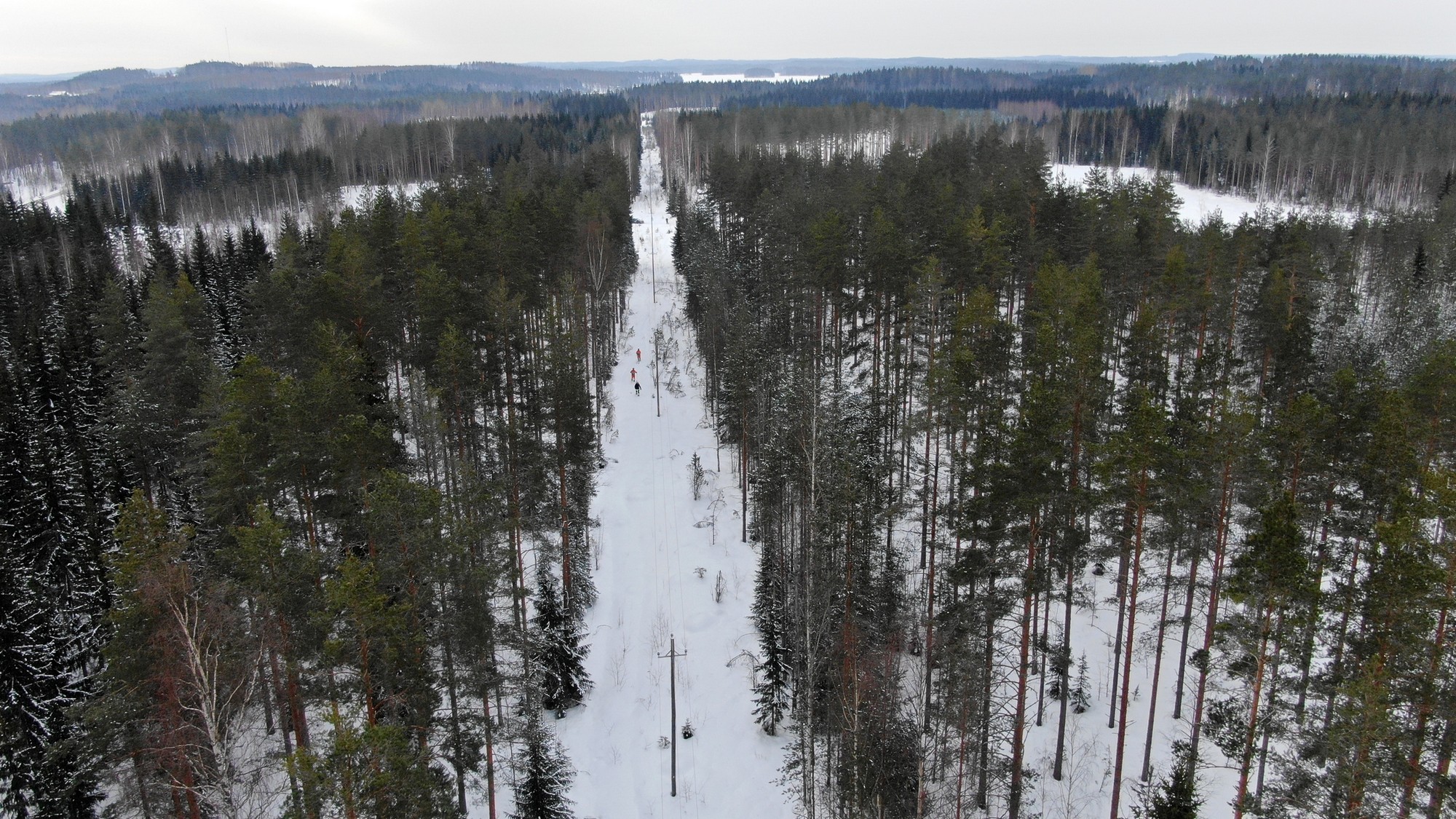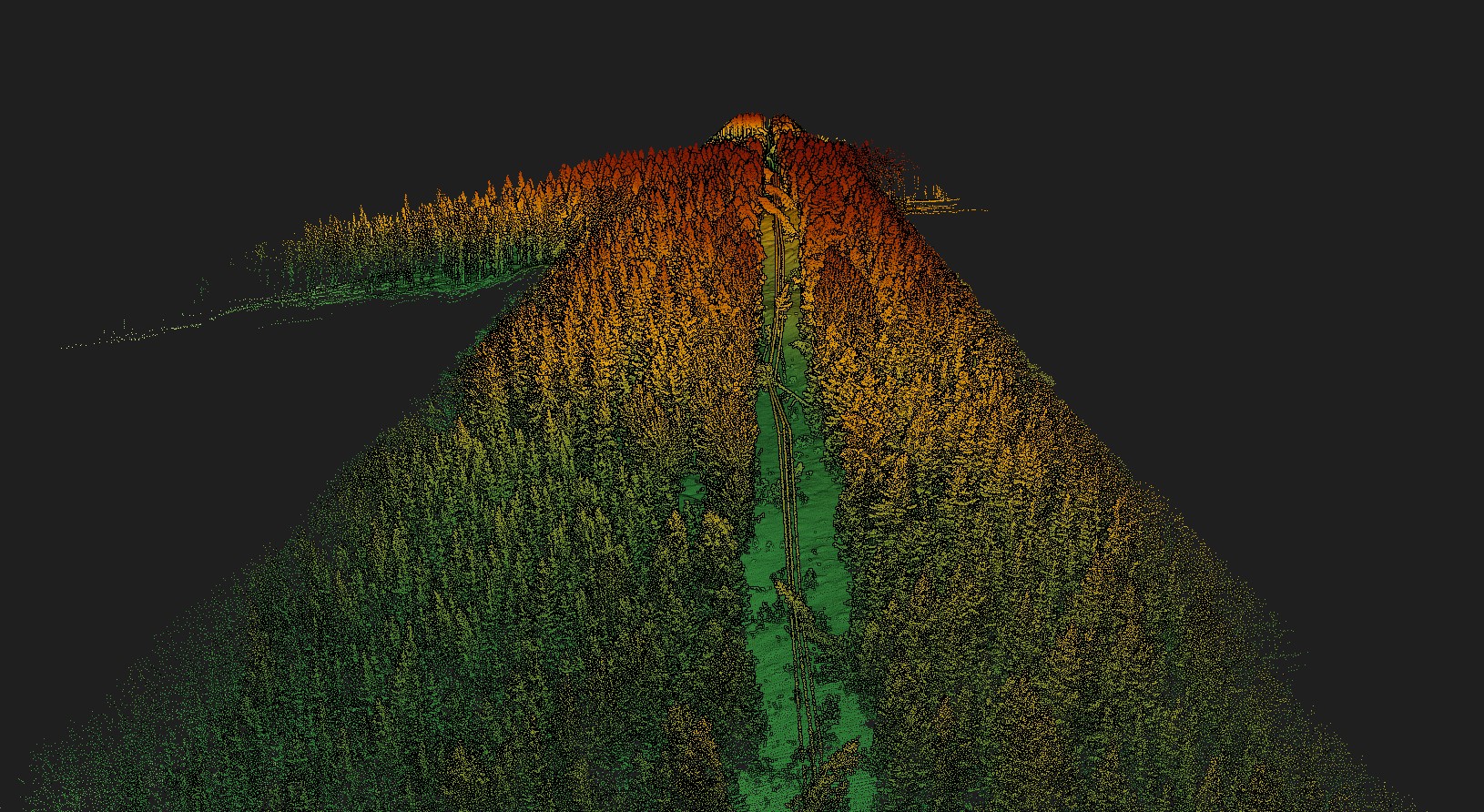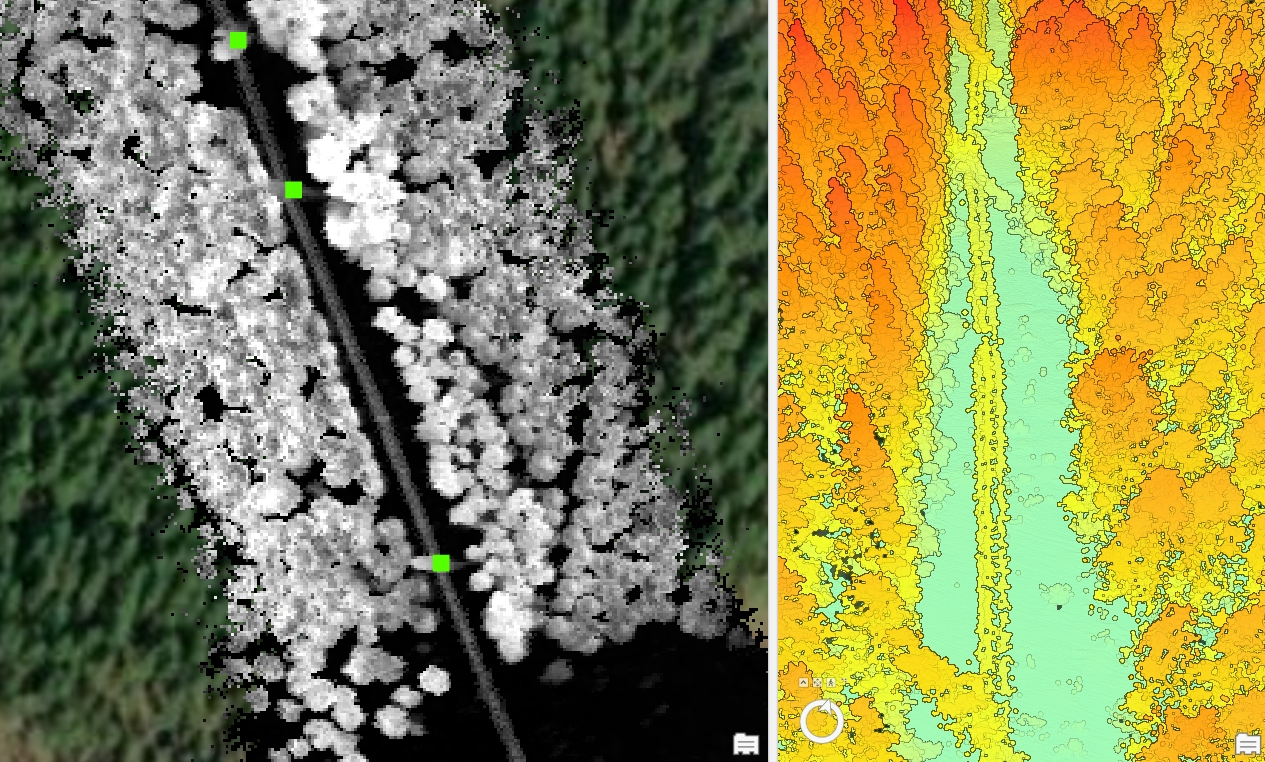The innovative project to detect storm damage brought together by collaboration
Hepta, along with Suur Savon Sähkö (SSS), Järvi Suomen Energia (JSE), and ESRI Finland, conducted a pilot project to prove the feasibility of night-time storm damage detection using drones, LiDAR, and post-flight analysis. The project was called to life to speed up the location and elimination of fallen trees and damage on overhead powerlines during storms. The goal is to shorten electricity outages and improve services for homeowners in Finland’s lake district.

JSE ground team deliberately felling trees on the old overhead power lines. This mimicked possible storm damage which occurs during heavy winds.
The project was brought to life in collaboration between Suur Savon Sähkö, Järvi Suomen Energia, Hepta and ESRI Finland.
Suur-Savon Sähkö (SSS) is an energy group in Finland, and the owner of electricity and heat networks in Finland’s lake district – an area filled with numerous lakes and islands. This location offers unique challenges for managing overhead power line grids. The annual impact of SSS to the regional economy is over 100 million euros.
Järvi Suomen Energia (JSE), a subsidiary of SSS, manages 27,000 kilometers of electricity networks to distribute power to over 100,000 customers. Nearly 50 million euros are invested into developing the electricity networks annually. By continuously developing the network, JSE improves the grid conditions in the region.
Hepta provides end-to-end automated grid inspection and analysis solutions for overhead power lines in 11 Countries. Starting with drone-based data collection, then analyzing image data with the help of AI in uBird software, and finally delivering the results to the client’s systems.
ESRI Finland offers market-leading GIS solutions to both public organizations and private companies of every size. Their portfolio includes ArcGIS, a solution for damage detection from LiDAR point clouds.



